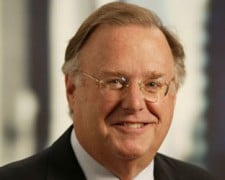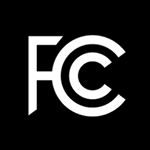 The House Subcommittee on Communications and Technology held a hearing on the Future of Television, inviting as witnesses representatives that could be called a broadcaster, a cablecaster, a satcaster, a webcaster, an on-demand content provider, a device manufacturer, a content provide and a watchdog. Here’s what they had to say:
The House Subcommittee on Communications and Technology held a hearing on the Future of Television, inviting as witnesses representatives that could be called a broadcaster, a cablecaster, a satcaster, a webcaster, an on-demand content provider, a device manufacturer, a content provide and a watchdog. Here’s what they had to say:
The following are summaries from the hearing held Wednesday 6/27/12.
* David Barrett, President and CEO, Hearst Television Inc. (pictured): 29 TV stations across the country, appearing on behalf of NAB. All panelists play important role in video ecosystem, but broadcast is the only one positioned to serve its local community. Unmatched variety and content, via a uniquely efficient spectrum usage model. There simply is not enough spectrum on the planet to handle pure streamed viewing. Broadcast mobile can offer high-quality video without extra spectrum and without high streaming costs or the need for caps. FCC must not jeopardize broadcast during repacking and incentive auctions. Retransmission consent is a value based negotiation and the current system should be retained. Broadcast programming is not the cause of cable price increases – they’ve outpaced inflation for the last 11 years, and most fees go to basic cable networks. Headed for a $29B basic cable bill v. $2B for broadcast, despite broadcast’s higher ratings. The money cable pays is not following the audience. Broadcasters must be able to protect their signals through retransmission no matter what the redistribution platform, including new internet entrants. Congress must protect retransmission consent and market exclusivity.
* Michael Powell, President and CEO, National Cable & Telecommunications Association.: Cable has made our “glimmering present” possible. Brought TV to hitherto unreachable rural and urban areas, developed new programs/channels, invented VOD, and bring broadband. Over 900 channels are now available and its still expanding. Provides niche programming to small passionate audiences. Cable now has 57% of MVPD business. Satellites, telcos now competing. Video streaming accelerating rapidly. Regulatory regime is now tarnished, foundation crumbled long ago, needs to be re-evaluated. Cable is not attempting to destroy new competitors. Continuing to innovate and improve.
* Charlie Ergen, Chairman, DISH Network.: 14M subs. Understand the customer, embrace change. Consumers want what they want wherever they are, whether at home or on the move. Bought Blockbuster, integrating it into the DISH business model along with numerous other innovations. Foster change, don’t ignore it. Needs the FCC to update its satellite rules to allow satcasters to get into broadband. Says retrans rules are outdated. Multiple in-market MVPD platforms mean that broadcast protection no longer needed. Broadcasters play one MVPD off another, and broadcasters pull high-demand programming like sports. Retrans needs an overhaul from Congress and FCC.
* Robert W. Johnson, CEO, Sky Angel U.S. LLC.: Provider of about 80 family-friendly programming channels, encrypted and available vie set-top box connected to the internet. Functionally, just like any other MVPD. Some, like the Discovery Channel, have used this lack of MVPD status to deny access to programming to Sky Angel. Looking to level the playing field between competing content distribution platforms.
* David Hyman, General Counsel, Netflix: Leveraging the power of the internet – finding new viewers by providing additional platform for programs. Traditional distribution platforms are becoming more like Netflix in their effort to provide VOD. For this reason, those that provide internet access must be watched closely to assure they are not stifling independents to promote their own offerings.
* Jim Funk, Vice President, Product Management, Roku: Small internet company, provider of consumer devices that enable streaming. Helped get Netflix into streaming. Roku provides applications that program providers can use and call “channels.” Provides access to numerous VOD program services. Also offers access to internet radio. Provides access to broadcast stations. Not advocating any legislation – just proud to be on innovative forefront. Wants to assure marketplace remains open between manufacturers, distributors and hosts.
* Michael P. O’Leary, Senior Executive Vice President, Global Policy and External Affairs, Motion Picture Association of America.: Consumers can get what they want, more options are coming. MPAA is partnering with numerous innovators with the consumer in mind. Big screen is the core of the movie business, but the television experience is improving every day.
* Gigi B. Sohn, President & CEO, Public Knowledge.: Believes we live in an era of unprecedented consumer choice when it comes to television, but that choice is limited by adherence to an outdated television business model. It is inhibiting online options from reaching their full potential. Wants to clear outdated rules off the books, make sure new entrants have access to content, and protect a free and open internet. All this will lead to more competition, which in turn will lead to lower prices, better service and more control over viewing by consumers.






I can see why the television networks would be upset about the Auto Hop feature but this is the future of TV. I don’t love my Hopper because it skips commercials I love my Hopper because it give me more time in my day. With college and working full time at Dish the Auto Hop feature has been a life saver. Now I don’t have to sacrifice my favorite show every week for homework.
Comments are closed.